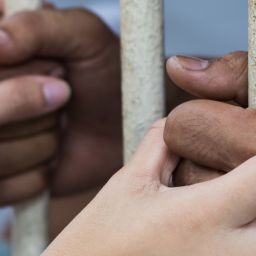Marijuana legalization has sparked significant debate across the United States, with Maryland and Baltimore feeling its impact. In 2023, Maryland legalized recreational marijuana, raising concerns about its effects on youth. Baltimore, with its unique social and economic challenges, is especially vulnerable to these changes. Understanding these effects requires examining various dimensions, from changes in marijuana use patterns to shifts in academic performance. Furthermore, it is crucial to explore how this legalization might influence broader community dynamics and the overall well-being of young people. This article delves into these aspects, providing a comprehensive look at how marijuana legalization impacts Baltimore’s schools and youth, including potential increases in substance abuse and other related issues.
Understanding The Context of Legalization
Maryland’s decision to legalize recreational marijuana was a significant step in a growing trend across the United States. The legalization movement is often driven by arguments in favor of reducing crime, increasing tax revenue, and promoting individual liberty. However, critics of legalization point to potential negative consequences, such as increased drug use among young people and impaired driving.
The legalization of marijuana in Maryland occurred in 2023, following a referendum that approved the measure by a narrow margin. In specified areas, individuals who are 21 years of age or older are permitted by law to possess and use marijuana. While the specific regulations vary, the general principle is to treat marijuana similarly to alcohol.
Timeline of Legalization in Baltimore
Marijuana legalization in Maryland was a gradual process, marked by legislative debates, public referendums, and policy adjustments. The journey began with initial discussions about decriminalization, followed by a series of legal reforms leading to full recreational legalization. Baltimore, being one of the largest cities in the state, has been at the forefront of implementing and adapting to these changes within its school systems.
Impact on School Policies and Regulations
Implementing new policies has not been without challenges. Schools have had to balance the new legal landscape with existing rules, often leading to confusion among staff and students about what is permissible. Administrators must navigate a complex web of regulations while ensuring that educational environments remain safe and supportive. This has involved frequent updates to school handbooks, training sessions for staff, and clear communication with students and parents. Additionally, schools face the task of addressing varied interpretations of the new laws and managing their impact on student behavior and discipline. The evolving nature of these policies adds an extra layer of complexity to the daily operations of educational institutions.
Introducing Support Systems for Students
Recognizing the need for support, many schools have introduced counseling services and educational programs aimed at helping students navigate the changes brought about by legalization. These initiatives are designed to provide students with accurate information about marijuana use, its potential effects, and the legal implications of their choices. Schools have also implemented peer support groups and workshops to foster open discussions and build a supportive community. Additionally, partnerships with local health organizations and mental health professionals have been established to offer expert guidance and resources. These support systems are crucial in addressing any issues related to substance use, helping students develop healthy coping mechanisms, and ensuring they have access to the necessary resources for managing their well-being in the evolving legal environment.
Educational Outcomes
Academic Performance Trends
Research suggests that substance use can impact academic performance in various ways, affecting cognitive functions, motivation, and classroom behavior. With marijuana legalization, there has been a keen interest in monitoring whether there’s a correlation between cannabis use and students’ grades, participation, and overall academic success in Baltimore schools. Educational researchers and administrators are closely tracking changes in academic metrics such as test scores, attendance rates, and engagement levels. They are also examining patterns in student behavior and classroom interactions to assess the broader impact of marijuana use on learning outcomes. This ongoing analysis aims to identify any potential trends or shifts in academic performance linked to cannabis use and to determine whether additional support or interventions might be necessary to address any emerging issues.
Attendance and Dropout Rates
Attendance and dropout rates are critical indicators of student well-being and academic engagement, reflecting not only the level of student commitment but also their overall experience within the educational system. Monitoring these rates helps educators and policymakers gauge how various factors, including marijuana legalization, impact students’ consistency in attending school and their likelihood of completing their education. By analyzing trends in attendance and dropout rates before and after legalization, stakeholders can gain insights into how changes in the legal status of marijuana may influence students’ motivation, school satisfaction, and external pressures. Additionally, examining these trends helps in identifying any correlations between increased substance use and declines in school engagement or achievement. Understanding these dynamics can provide valuable information for developing targeted interventions and support strategies to ensure students remain engaged and successful throughout their educational journey.
Disciplinary Actions Related to Marijuana Use
Disciplinary actions have had to adapt significantly in response to marijuana legalization. Schools must now carefully distinguish between the legal use of marijuana outside of school hours and prohibited use during school activities. This nuanced understanding has led to comprehensive revisions in disciplinary procedures to ensure fairness and clarity. Educators and administrators are now tasked with updating their policies to reflect the new legal realities, which involves redefining what constitutes a violation and how to address it. This adjustment includes setting clear guidelines for what constitutes appropriate and inappropriate behavior related to marijuana use, both on and off school premises. Schools have also had to train staff to handle these situations with sensitivity and consistency, ensuring that disciplinary measures are both legally compliant and effective in maintaining a safe learning environment. Additionally, schools are incorporating educational components into their disciplinary approach to help students understand the legal and health-related implications of marijuana use.
Health and Well-being of Youth
Mental Health Implications
Marijuana use, particularly among adolescents, has been linked to various mental health issues, including increased risks of anxiety, depression, and other psychological conditions. In light of marijuana legalization, Baltimore’s schools are vigilantly monitoring these trends to identify any emerging patterns in student mental health. Educators and mental health professionals are paying close attention to changes in students’ emotional well-being, including heightened levels of stress and anxiety. Schools are implementing screening programs and support services to address these issues early and provide necessary interventions. Additionally, there is a focus on increasing awareness and education about the potential mental health effects of marijuana use, aiming to equip students with knowledge and resources to manage their mental health effectively.
Physical Health Concerns
While marijuana is often touted for its medicinal properties, recreational use among youth can pose significant physical health risks. These risks include potential impacts on lung health, cardiovascular function, and overall physical development. Schools and healthcare providers are actively monitoring trends related to these health concerns, looking for signs of adverse effects among students. Health professionals are conducting regular health screenings and providing educational programs to inform students about the potential physical risks associated with recreational marijuana use. Moreover, schools are collaborating with local healthcare organizations to ensure that students have access to necessary medical evaluations and treatments. By staying informed and proactive, schools aim to address any emerging health issues and promote the overall well-being of their students.
Access to Healthcare and Counseling Services
With changes in marijuana legalization, there has been an increased emphasis on providing accessible healthcare and counseling services within schools. This shift reflects a broader commitment to supporting students in making informed decisions about substance use and overall health. Schools are expanding their mental health and counseling services to address the specific needs arising from legalization. This includes offering personalized counseling sessions, substance use education programs, and support groups for students and their families. Additionally, schools are working to improve access to healthcare resources by partnering with local clinics and mental health organizations. The goal is to ensure that all students have the necessary support and resources to navigate the complexities of marijuana use and make healthy, informed choices.
Social Dynamics and Behavior
Peer Relationships and Social Circles
Marijuana legalization can significantly influence social dynamics among youth, altering the way students interact with their peers. As marijuana becomes more accessible and socially accepted, changes in peer pressure and friendship dynamics may emerge. It’s essential to understand how these shifts affect friendships and group behaviors within the school environment. For instance, students might experience increased pressure to conform to new norms around marijuana use, which can affect their social interactions and influence their decisions. Schools are paying close attention to how these changes impact social circles and peer relationships, aiming to foster a supportive environment where students can navigate their social dynamics positively. Additionally, educators and counselors are working to address any negative peer influences and promote healthy, supportive friendships that encourage positive behavior and academic success.
Substance Use Trends Beyond Marijuana
While marijuana legalization addresses one aspect of substance use, the use of other substances remains a significant concern for schools. Despite marijuana’s legal status, there is a risk that its increased availability might inadvertently lead to higher use of other drugs. Schools are vigilant in monitoring substance use trends beyond marijuana, such as the use of opioids, alcohol, and synthetic drugs. By keeping a close watch on these trends, educational institutions aim to prevent any potential escalation in drug use among students. This includes implementing comprehensive drug education programs, conducting regular surveys to gauge substance use patterns, and collaborating with community health organizations to address emerging issues. Schools are committed to providing resources and support to mitigate the risks associated with substance abuse and to ensure a safe, healthy learning environment.
Behavioral Changes in Students
Behavioral changes, such as increased absenteeism, tardiness, or disruptions in class, may be indicative of underlying issues related to substance use. Schools are actively tracking these behaviors to identify and address potential issues promptly. For example, a rise in absenteeism or frequent lateness might signal problems related to substance abuse or other external factors impacting students’ ability to attend school regularly. Teachers and administrators are trained to recognize these behavioral patterns and provide appropriate interventions. By closely monitoring student behavior, schools aim to offer timely support and resources, such as counseling and academic assistance, to help students overcome challenges. Early identification and intervention are crucial in addressing the root causes of behavioral changes and ensuring that students receive the necessary support to thrive academically and personally.
Community and Parental Perspectives
Community Attitudes Towards Legalization
The broader community’s attitudes towards marijuana legalization significantly impact schools and their approach to managing related issues. Community sentiment can shape public opinion about marijuana use, influencing how schools develop and implement their policies and support systems. For example, if the community is supportive of legalization, schools may focus on educational programs that align with these views, emphasizing responsible use and harm reduction. Conversely, if there are concerns or opposition within the community, schools might adopt stricter policies and engage in more proactive outreach and education efforts. Understanding these community attitudes helps schools tailor their strategies to better align with local values and expectations, ensuring that their approaches are both relevant and effective in addressing the evolving landscape of marijuana legalization.
Parental Concerns and Involvement
Parents have a strong influence on their children’s lives and their opinions about marijuana use greatly affect how schools approach the subject. Parental involvement in school activities and decision-making processes can affect the effectiveness of educational programs and support systems related to substance use. Parents’ worries about the potential impacts of marijuana on their children’s health, academic performance, and behavior often drive their engagement with schools. Schools that actively involve parents in discussions about substance use and related policies can foster a collaborative approach to addressing these issues. By incorporating parental feedback and addressing their concerns, schools can better support students and create a more comprehensive approach to substance education and prevention.
Community Support Programs
Various community support programs have emerged to assist schools in navigating the challenges posed by marijuana legalization. These programs often involve collaboration between schools, local organizations, and healthcare providers to address the multifaceted issues associated with legalization. For example, community-based initiatives might include substance abuse prevention programs, mental health services, and educational workshops for students and families. Local organizations may offer resources such as counseling services, support groups, and educational materials to help schools manage the impact of legalization effectively. By working together, these community support programs provide schools with the tools and expertise needed to enhance their efforts in addressing marijuana-related challenges and ensuring the well-being of their students.
Legal and Disciplinary Implications
School Disciplinary Measures Post-Legalization
Post-legalization, schools have had to thoroughly revisit and revise their disciplinary measures related to marijuana use. The legalization of marijuana requires a clear distinction between legal possession and use outside of school hours and prohibited use within school premises. This shift has led to the development of updated codes of conduct that specifically address marijuana-related issues. Schools now face the challenge of implementing these revised policies consistently while ensuring they comply with both state laws and educational regulations. This process includes defining what constitutes illegal use on campus, updating disciplinary protocols, and training staff to handle these situations appropriately. By doing so, schools aim to maintain a safe and supportive learning environment while aligning their policies with the new legal landscape.
Juvenile Justice System Interactions
In some cases, marijuana-related incidents may necessitate involvement with the juvenile justice system. When such incidents occur, schools work closely with legal authorities to ensure that disciplinary actions are in harmony with legal standards and that they support the rehabilitation of students. This collaboration includes sharing information about incidents with law enforcement, participating in diversion programs, and facilitating communication between students, families, and legal professionals. Schools strive to balance maintaining a conducive educational environment with addressing legal obligations and providing support for students to avoid future legal troubles. By coordinating with the juvenile justice system, schools aim to provide appropriate consequences while focusing on rehabilitation and educational support to help students learn from their experiences and reintegrate successfully into their academic lives.
Legal Awareness and Education in Schools
Educating students about the legal implications of marijuana use is crucial in the post-legalization era. Schools are incorporating comprehensive legal awareness programs to inform students about their rights, responsibilities, and the potential consequences of illegal activities related to marijuana. These programs include workshops, seminars, and informational materials designed to clarify the legal boundaries and the impact of substance use on their future. By integrating legal education into the curriculum, schools aim to empower students with knowledge that helps them make informed decisions and understand the broader legal context of their actions. This proactive approach not only helps prevent illegal behavior but also promotes a responsible and informed student body capable of navigating the complexities of the evolving legal landscape surrounding marijuana use.
Seeking Professional Help?
Are you or someone you love struggling with marijuana addiction? Don’t wait any longer. Contact 70×7 Wellness Mission Baltimore today for compassionate support and effective treatment. Our dedicated team is here to help you take back your life. Together, we can overcome addiction and achieve lasting recovery.
Conclusion
Marijuana legalization has multifaceted effects on Baltimore’s schools and youth, influencing various aspects of the educational environment and student well-being. The shift in legal status has necessitated changes in school policies and disciplinary measures, as institutions must now navigate the complexities of distinguishing between legal and illegal use. These changes affect how schools handle marijuana-related incidents and how they communicate and enforce new rules. Additionally, the implications of legalization extend to academic performance and health, with potential impacts on students’ grades, attendance, and overall physical and mental health. The introduction of marijuana into the legal sphere presents both challenges and opportunities. While it brings new issues such as an increased need for substance abuse education and mental health support, it also opens avenues for enhanced educational programs, improved support systems, and strengthened community engagement. By proactively addressing these diverse issues and integrating comprehensive strategies, Baltimore has the chance to create a more informed, supportive, and safe environment for its youth, helping them navigate the evolving landscape of marijuana use responsibly and healthily.
















